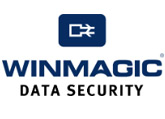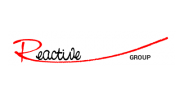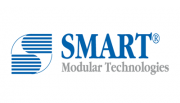SanDisk® X300s SSD
Ideal for corporate PCs and notebooks, the X300s features industry-standard security support and a Device Sleep (DEVSLP) low-power mode. Experience greater productivity with an increase in useable hours per battery charge**As compared to 7200 RPM SATA 2.5” hard drive.
Ideal for corporate PCs and notebooks, the X300s features industry-standard security support and a Device Sleep (DEVSLP) low-power mode. Experience greater productivity with an increase in useable hours per battery charge**As compared to 7200 RPM SATA 2.5” hard drive. Based on published specifications and internal benchmarking tests., and rest easy knowing your data is secure while on the go.
- 64GB – 1TB
- SATA 6Gb/s
- 2.5" 7mm, M.2 2280-S2-B-M3
- Sequential (R/W)5 520/460 MB/s
- Random (R/W)5 96K/80K IOPS
- 1Ynm X2
- nCache 1.0, TCG Opal 2.0 & eDrive
- Self-encrypting SSD using AES 256-bit encryption
- Support for TCG Opal 2.0 and Microsoft® Encrypted Hard Drives
- Compatible with Windows® 8 InstantGo
- Advanced flash management
- Thermal throttling
- Tiered caching—volatile and non-volatile cache
Features
Security
The X300s supports the TCG Opal 2.0 and Microsoft Encrypted Hard Drive industry security standards and is supported by a broad ISV ecosystem.
Security Management Software
SanDisk’s broad ecosystem of independent software vendors (ISVs) for security management delivers easier data protection management in today’s multiplatform environments, as well as cloud-based manageability of SE-SSDs, making them a viable option for businesses with a wide range of IT requirements and budgets. This ecosystem also allows corporations to meet many of the regulatory standards for encryption of protected employee data such as those mandated by HIPAA, Sarbanes-Oxley, PCI-DSS, and many state and local privacy laws. Corporations can easily deploy Data Loss Prevention methods to protect corporate IP, meet compliance laws, and reduce overall TCO.
Advanced Power Management
The drive utilizes a SATA DEVSLP low-power mode, compatible with Windows® 8 InstantGo, to minimize its power consumption during idle periods. DEVSLP enables the SSD to completely shut off its SATA PHY, resulting in much lower power consumption compared to SATA Slumber. This increases the amount of usable hours per battery charge5, which is essential for modern mobile devices.
1Approximations based on an industry metric, introduced by SanDisk, that quantifies how much data can be written to a SSD in its lifespan expressed in terabytes written (TBW). Data is written using typical PC transfer size, written at a constant rate over the life of the SSD and data is retained for at least 1 year upon TBW exhaustion. Based on SanDisk internal measurements, a typical client PC user writes 4 GB/day.
21 gigabyte (GB) = 1 billion bytes. 1 terabyte (TB) = 1 trillion bytes. Some capacity not available for data storage.
3nCache™ acceleration technology is a large Non Volatile Write Cache, a unique feature in SanDisk SSDs that improves random write performance to ensure an improved user experience. Studies show that modern operating systems mostly access the storage device using 4k access blocks. The cache is filled during these small write commands and emptied during idle time when the host is not accessing the drive, with no risk of data loss. For a typical everyday use, the write performance that the users see is the nCache™ (burst) high performance, and not steady state (sustained) SanDisk U100 SSD performance. Based on IOmeter 4K random write test.
4Based on SanDisk internal testing; performance may be lower depending upon host device. Technical specifications are preliminary and subject to change.
5With Slumber (SATA PHY state) power mode and DIPM enabled. Lower power modes can be achieved by implementing advanced low power management techniques. Technical specifications are preliminary and subject to change.











 Please wait...
Please wait...
